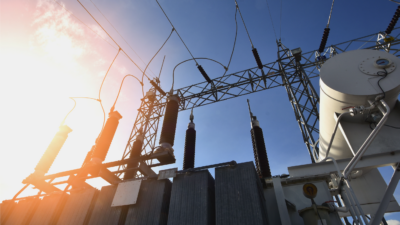Brimstone batteries can store way more energy than today’s lithium-ion, but there’s one big problem engineers must solve.
The green energy transition is being powered by lithium-ion (Li-ion) batteries. With their extremely high energy density compared to other battery chemistries, Li-ion is the most dominant type of battery today.
But what will be the most dominant battery in the future? Despite their advantages, today’s Li-ion batteries have well-known drawbacks related to safety and material availability, and battery researchers are busily exploring many possible alternatives.
One of the most promising of these is lithium-sulfur (Li-S) batteries, which can store even more energy than today’s Li-ion batteries—but they have one big disadvantage that engineers will need to overcome.
Why Lithium-Sulfur Batteries Are So Promising
Lithium-sulfur batteries use sulfur as the cathode, compared to the nickel, manganese, and cobalt commonly found in Li-ion cathodes. Unlike those expensive and rare elements, sulfur is plentiful and can be found almost anywhere on Earth.
Even better, Li-S batteries have double the energy density of Li-ion batteries, meaning more power for less weight. And the technology can easily be mass-produced, as the manufacturing process for Li-S is similar to Li-ion batteries and can re-use existing plants. Plus, Li-S requires much less production energy since sulfur only requires 112˚C to melt into crystal form.
So, what’s the catch?
The Big Problem with Lithium-Sulfur Batteries
Lithium-sulfur batteries are far from a new idea, with the chemistry first being patented in 1962 by Herbert Danuta and Ulam Juliusz. There’s a good reason they haven’t had commercial success in the years since. Li-S batteries suffer from one major challenge: charging cycles. While lithium-ion batteries can handle up to a few thousand charge cycles, lithium-sulfur batteries can’t even reach half of that.
Li-S batteries have difficulty re-depositing lithium evenly on the anode during recharging. The source of the problem is the internal chemistry of Li-S batteries. During the charging process, Li-S batteries form and accumulate chemical deposits in tree-like structures—dendrites—that spread from the lithium anode. These deposits degrade the anode and electrolyte, shorting the battery lifespan and reducing the power it can deliver. They can even cause internal short circuits and fire given a flammable electrolyte.
Solving this issue has become the focus of many research projects, as it is essential to make Li-S batteries a realistic alternative to Li-ion.
Researchers Look to Solve Li-S Challenges
The EU-funded LISA project, which finished at the end of last year, studied different ways to optimize Li-S batteries to be reliable and effective in small electric vehicles. For example, one approach used a laser to integrate tiny layers of ceramic composite on the anode to prevent the formation of dendrites.
Researchers are also working on improving the Li-S electrolyte to minimize the risk of battery fire. Instead of a gel or liquid electrolyte, which is susceptible to fire, they experimented with solid ceramic elements combined with a flexible polymer. LISA researchers also considered a heat-sensitive cut-off material (fuse) inside the battery that could switch off electrical current flow if the temperature increases too quickly.
Researchers are also thinking about removing the need for lithium in Li-S batteries. Instead of lithium, they would use sodium to build sodium-sulfur batteries. This more eco-friendly solution would eliminate a massive supply chain bottleneck.
However, the biggest challenge remains. To integrate Li-S batteries in the transportation market, they’ll need a significantly higher number of cycles. If battery researchers can effectively solve this problem, Li-S batteries could see mass adoption by the end of the decade.
Current Uses of Li-S Batteries
While researchers look to expand the possibilities of Li-S, there are already several manufacturers that can deliver Li-S batteries. The batteries are used in certain applications where weight and a long running time with a single charge are crucial, such as drones or satellites.
In 2020, LG Energy installed a Li-S battery in a High-Altitude Long Endurance (HALE) solar-powered Unmanned Aerial Vehicle (UAV) developed by the Korea Aerospace Research Institute. It had a successful 13-hour test flight at the highest altitude possible in the stratosphere, subject to a temperature of -70˚C and a pressure just four percent of ground level.
A German battery startup called Theion is working to bring Li-S batteries to electric vehicles (Theion is Greek for sulfur). The company’s website says it expects to have samples of its Li-S technology for automotive customers as early as 2024.
Whatever the timeline, it seems that sulfur could solve many of our energy issues—if engineers can solve sulfur’s issues first.



